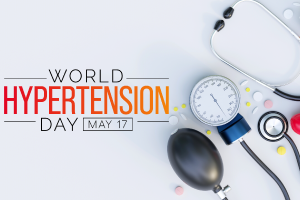

When working long hours in front of the computer, we often tend to forget to correct our posture, which can result in the onset of cervical spondylosis. Cervical spondylosis is a condition that affects the bones cartilage, disks, and ligaments of the neck. This leads to acute pain in the affected areas. It can also cause severe headaches. Its progression can however be controlled with certain cervical spondylosis exercises.
Vertebral edges frequently develop bone spurs called osteophytes in cervical spondylosis. The discs tend to become thin with time and their ability to absorb shock reduces. Thus the chances of developing cervical spondylosis increase. Facet joints, 2 joints between vertebrae in the back of spine, tend to add pressure to nerve roots which can result in excruciating pain.
Symptoms of Cervical Spondylosis
In most cases, there is only neck pain, stiffness, and the occasional headache. More severe symptoms include:
- Pain in shoulders, arms and legs
- Difficulty moving the head
- Dizziness and frequent blackouts
- Loss of bowel control
- Difficulty in bladder function and coordination
- Lack of dexterity
Some may consider these symptoms as signs of tiredness and fatigue. However, if the symptoms continue for a long period of time, it is best to get them checked by a healthcare professional who may suggest various spondylosis exercises that may help ease the pain.
Causes of Spondylosis
Cervical spondylosis develops as a result of the cervical spine’s long-term degeneration and wear and tear. An earlier neck injury can also result in this condition. Carrying heavy loads, performing martial arts, and dancing are the activities that can gradually result in the onset of cervical spondylosis.
Due to lifestyle changes and a sedentary lifestyle, youngsters are also susceptible to this condition. Long working hours, a lack of physical activity, and increased stress contribute to it becoming a chronic health issue in the long run. According to some researchers, cervical spondylosis can even occur as a result of genes. It generally occurs after the age of 40 and progresses over time. Men typically develop it at a younger age than women. Cigarette smoking may also increase the risk.
Exercises for Cervical Pain
If your job requires you to be seated in front of a computer for hours, you must consciously relax the muscles in your shoulders and neck. Make sure you take breaks and maintain your posture. One can also do some cervical spondylosis exercises to relieve stress on your cervical vertebrae. Here are a few exercises for cervical pain that you can practice:
1. Circles
Stand straight and position your feet a bit apart. Move your neck left to right and slowly form half circles with your head. Draw a curve with your chin up and to one side as you lower your chin to your chest. Return to the centre and draw another arc to the opposite side. Repeat this cervical exercise about five times. Make sure to move slowly and without jerking during this exercise.
2. Hunches
Lift your shoulders into a hunched position while standing with your feet shoulder-width apart. Bring them up to your ears and then relax. Perform five repetitions and roll the shoulders in slow circles, first to the front and then to the back.
3. Arm Lifts
Standing comfortably, stretch your arms out ensuring that your palms are facing each other. Lift your arms to your ears while inhaling. Move slowly and till the point where there is no pain. This exercise should be done eight times.
4. Yoga
Yoga is a holistic and natural treatment for cervical spondylosis. Regular practice of this ancient science results in a flexible body, a calm mind, and positive vibes.
5. Gomukh Asana
Sit with your knees folded and place your hands on your shoulders, keeping the spine straight. Push both your hands behind and try connecting. Touch your fingers to the shoulder blade. Stay in this position for three counts, then switch sides and repeat.
6. Tad Asana
Stand tall with your feet together. Raise your arms above your head and inhale deeply. Interlock your fingers and extend your palms upwards and then extend your entire body upwards. While exhaling, bring your hands down until they rest on your head. Repeat this asana five times.
Conclusion
If you have neck pain, consult a doctor or physical therapist before beginning any of these cervical spondylosis exercises. When performed correctly, these stretches and exercises can be beneficial in the treatment of cervical spondylosis, however, improper execution can result in injury.
Many cases of cervical spondylosis can be treated without surgery. Appropriate medical attention, proper care, and regular exercise are frequently effective. Other treatments commonly recommended by doctors include physiotherapy, pain relievers, and antidepressants. Aside from that, consciously improving your posture can help reduce strain as well as pain on the neck. If you experience pain while performing any of the cervical exercises, always consult your doctor.




